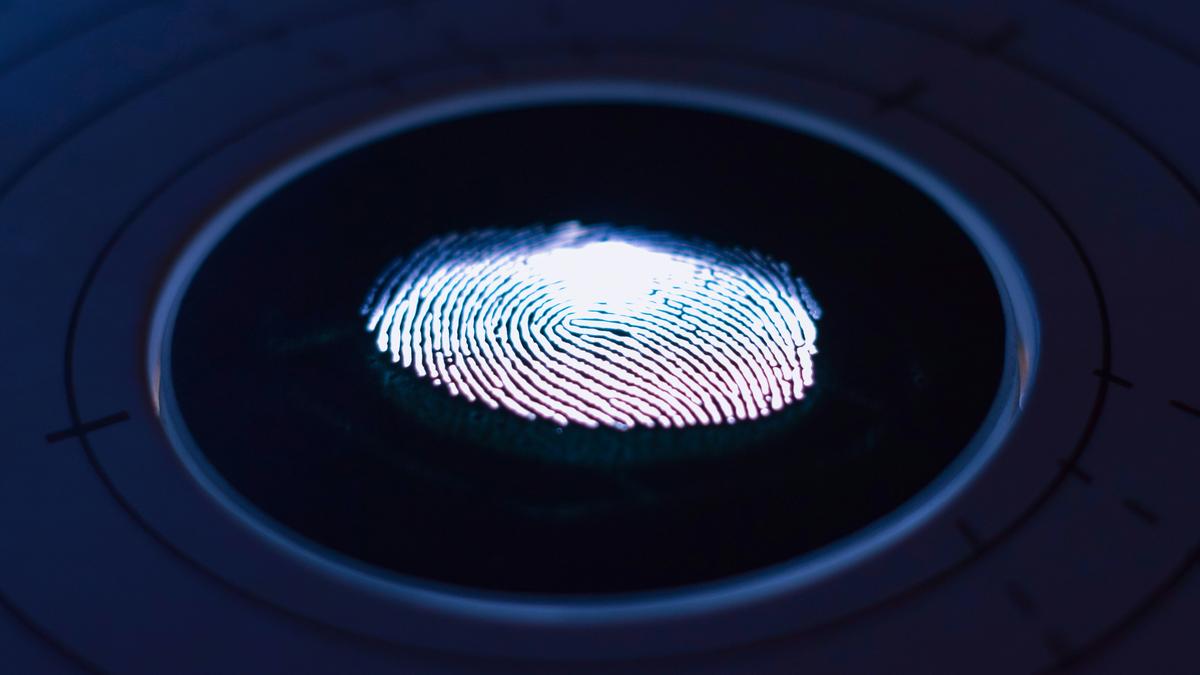Fingerprints are personal and unique. Even identical twins do not have the same fingerprint.
| Photo Credit: George Prentzas/Unsplash
We use many features of our bodies to identify ourselves in government records. Fingerprints in particular are widely used, from unlocking phones with sensors to validating Aadhaar cards. But fingerprints can also be fickle. For example, if you spend an hour in the pool, a fingerprint sensor may no longer be able to read yours. This is because wrinkles will have formed on your fingertips.
Unlike raisins, which swell in water, the skin on our fingers contracts, creating a wrinkling pattern on the tips of our fingers. The discovery of this mechanism over two decades ago challenged the idea that wrinkles form when the skin on the finger swells. Upon further probing, scientists found that the shrinking may have evolved to help humans grip objects better underwater.
The wrinkling happens because when you are in water, the nerves in your fingertips send signals to the brain, which asks the blood vessels in the fingertips to contract.
When Binghamton University associate professor of biomedical engineering Guy German wrote about this for a children’s science magazine, a curious student asked: “Do the wrinkles always form the same way?” This led him to investigating whether the wrinkled pattern is as unique as the fingerprint. In a study published in May in the Journal of the Mechanical Behavior of Biomedical Materials, German and graduate student (recently graduated) Rachel Laytin reported just that.
The team found that the pattern is the same for an individual regardless of how many times it is forced to wrinkle. In their test, team members immersed hands in 40º C water for 30 minutes. Then they mapped the wrinkles and compared them to patterns formed 24 hours later, when the test was performed again. There were only a few small differences.
While fingerprints are two-dimensional motifs, wrinkling patterns are three-dimensional because they have trough-like low points and groove-like high points.
Fingerprints are personal and unique. Even identical twins do not have the same fingerprint.
What explains the near-uniqueness of wrinkling patterns? If wrinkles occur because blood vessels beneath the skin have been constricted, then the network of these blood vessels must be unique in all of us.
According to German, “The size and distribution of blood vessels is well known to vary across individuals. However, not enough studies have been performed to definitively say they are different for all humans.”
If the wrinkles can be used to identify people, it could be used in place of fingerprints, too, especially when law enforcement officials have to identify cadavers found in water, and to quickly identify victims following water-based disasters like floods and tsunamis.
One gap is that there doesn’t seem to be a relationship between wrinkle patterns and fingerprints. Until such a mapping is found, the wrinkle pattern will constitute a separate instrument of identification — something government agencies could record after collecting one’s fingerprints as well.
Shrivaishnavi Ranganathan is a science-educator-turned-writer.
Published – May 27, 2025 05:45 am IST
